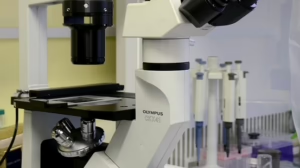From Fertilization to Function: A Journey Through Human Development
Human development is a remarkable and complex journey that begins at the moment of fertilization and unfolds through a series of well-orchestrated stages. This intricate process transforms a single fertilized egg into a fully functioning human being. Understanding this journey provides insights into not only the biological foundations of life but also the incredible mechanisms that govern growth, differentiation, and functional organization.
1. The Beginning: Fertilization
The journey of human development starts with fertilization, a crucial event where a sperm cell meets and penetrates an ovum (egg). This process typically occurs in the fallopian tubes. Upon fertilization, the genetic materials from both the sperm and egg combine to form a zygote, a single cell with a complete set of chromosomes—half from the mother and half from the father.
The zygote undergoes rapid cell division, known as cleavage, as it travels toward the uterus. This stage takes approximately a week, during which the zygote becomes a blastocyst, a structure that is essential for implantation in the uterine lining.
2. Embryonic Development: The First Trimester
Implantation: About a week after fertilization, the blastocyst implants itself into the endometrium of the uterus. This step is critical as it establishes the connection between the developing embryo and the mother’s blood supply.
Gastrulation: Soon after implantation, the embryo undergoes a process called gastrulation, which establishes the three primary germ layers: ectoderm, mesoderm, and endoderm. Each layer gives rise to different cell types and organs. For example:
- The ectoderm will develop into the nervous system and skin.
- The mesoderm forms muscles, bones, and the circulatory system.
- The endoderm becomes the gastrointestinal tract and various internal organs.
Neural Development: By the end of the first trimester, significant developments occur in the nervous system. Neurulation, the formation of the neural tube, sets the foundation for the brain and spinal cord. This stage is critical, as any disruptions can lead to neural tube defects.
3. Fetal Development: The Second and Third Trimesters
Growth and Maturation: Once the embryonic stage is complete, the fetus enters a period of rapid growth. By the end of the second trimester, the fetus has a recognizable form, and its organs continue to mature. The nervous system begins to function, and the fetus can respond to external stimuli.
During this time, the development of senses takes place. By the end of the third trimester, the fetus can hear sounds, respond to light, and even practice breathing by inhaling amniotic fluid.
Final Preparations for Birth: In the last weeks before delivery, significant changes occur. The fetus gains weight, fat accumulates under the skin, and the lungs continue to mature, preparing for life outside the womb. The position of the fetus often shifts as it moves into the birth canal, ready for labor.
4. Birth: The Transition to Independency
Birth marks a pivotal transition from intrauterine life to independent existence. This moment initiates numerous physiological changes; the newborn takes its first breaths, and the circulatory system adapts to life outside the womb. The ductus arteriosus and foramen ovale, essential structures during fetal life, close, allowing for normal blood flow through the lungs.
5. Early Infancy: Establishing Function
During the first year of life, critical development continues as the newborn transforms into an infant. They rapidly gain weight and begin to meet developmental milestones such as rolling over, sitting up, and eventually crawling. Sensory development accelerates, and social interactions become vital for cognitive and emotional growth.
6. Cognitive and Emotional Development
Human development is not just biological; it encompasses cognitive and emotional growth. The early years are pivotal for brain development, with neural pathways forming in response to experiences and stimuli. Healthy interactions with caregivers contribute significantly to emotional well-being and social skills.
Conclusion
The journey from fertilization to functional adulthood is a breathtaking process filled with complexity, precision, and adaptability. Each stage of human development—from a single cell to a fully formed human being—demonstrates the incredible orchestration of biological processes. Understanding this journey not only highlights the marvels of nature but also underscores the importance of a nurturing environment that supports healthy development throughout the stages of life.
For further reading and a deeper understanding of human development, visit [modern_footnote_source_link].


























Add Comment